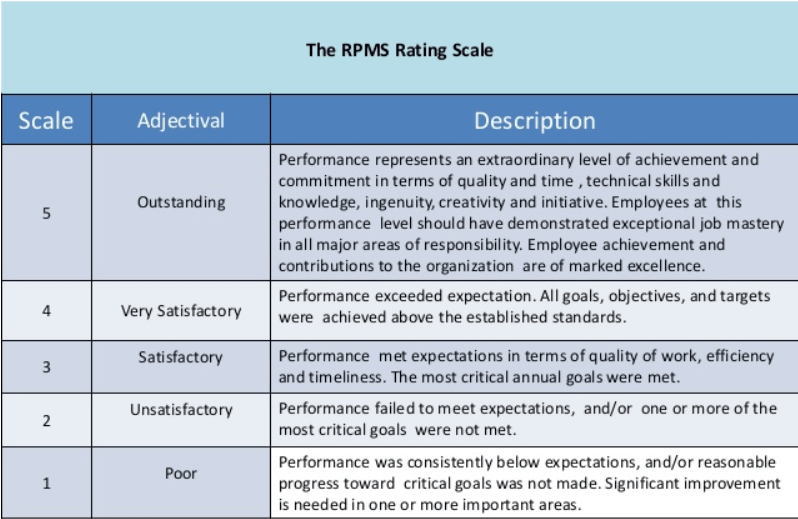
Employee Experience
Employee evaluation forms explained (with free survey template)
Updated August 22, 2024
Ready to formalize and standardize your employee performance management process? Use our tips to build and customize an employee evaluation form that works for the company's performance management process.
Help your employees understand what’s expected at their employee performance reviews, by providing employee evaluation forms that help judge their performance in a fair and consistent way.
If you’re not sure where to begin, let's take a closer look at the role employee performance evaluation forms play in employee performance reviews, the benefits of using an evaluation form, how often to evaluate your employees, and what to include on your own form. Plus, we’ve included a sample template to help you get started.
What is an employee evaluation form?
Typically, an employee performance evaluation form contains the objectives, goals, and behaviors expected of an employee. As part of the performance review process, an employee evaluation form is filled out by both employee and reviewer, and then this is used as a tool to have a performance review conversation(s) to assess an employee’s performance.
It is used in performance evaluations to ensure fair and consistent criteria and scoring and establishes a two-way conversation about performance expectations and deliverables between an employee and his or her leader.
“Leaders that proactively think about how to support employees and help them grow not only benefit the individual employee, but also the company.”
For example, by completing and reviewing the employee evaluation form, leaders can identify and discuss a person’s strengths and weaknesses, offer constructive feedback for skills development, and assist with goal setting.
(If you’d like more information on employee performance review template tips, please see our guide to employee performance reviews.)
Why are employee evaluation forms important?
Some of the benefits of using an employee evaluation form include:
- Aligning individual roles to business goals. An employee evaluation form underlines the organization’s vision and goals and illustrates to employees how their individual performance drives organizational performance.
- Establishing a clear understanding of job roles. Clearly defined goals and metrics empower employees to understand their specific job duties. Documenting (and discussing) said goals and metrics on an employee evaluation form eliminates ambiguities and helps to hold employees accountable for their designated work and responsibilities.
- Providing regular feedback about performance. Employee evaluation forms help identify an individual’s strengths and weaknesses, and most importantly, give employees a better understanding of the expectations that they are being held to.
- Discussing career development. A complete employee evaluation form should also contain a section to discuss and plan for an employee’s career. Career development and aspiration discussions help leaders better understand and champion employees’ desires for training and mentoring.
- Informing recognition and rewards. The employee evaluation form documents the outcomes and scores related to an employee’s job performance – two factors often used to inform annual bonus decisions, as well as other recognition and awards.
How often should employees be formally evaluated?
The performance review process varies from one organization to the next, but as a rule of thumb, employees should have formal evaluation discussions with their leaders at least once a year. Organizations may have an annual performance review template for this or may wish to repurpose an existing one.
One common approach to the annual performance appraisal, or the annual performance review, is the 360-degree feedback review. With this evaluation process, employees receive feedback not only from their managers, but also from their peers and junior team members. Employees often review themselves, as well, resulting in a 360-degree view of their strengths and accomplishments.
Some organizations believe in reviewing job performance more frequently. These organizations employ continuous feedback methods, preferring to share feedback with employees on a continual, ad hoc basis.
Falling somewhere between the once-annual performance review and the continual feedback approach, an employee pulse review is a smaller-scale employee review that’s conducted on a regular schedule, such as monthly or quarterly.
Pulse feedback is most commonly associated with employee engagement surveys, but pulses also work well for sharing feedback as they offer clear measures and are quick and easy to complete.
Learn how to give exceptional feedback in this comprehensive guide.
How do you write an employee evaluation form?
What should be included on an employee evaluation form?
Just like company culture, an employee evaluation form will be unique and specific to your organization’s values, goals, and purpose. However, there are a number of baseline components that every employee evaluation form should include:
- Employee and reviewer information, such as names, employee IDs, job titles, and signatures.
- The review period to determine the progress of an employee’s performance over time. This should include the time period being assessed, as well as the date of the review itself.
- A rating system that’s easy to understand.
- Goals should be established by both the manager and the employee. To maximize effectiveness, they should be SMART (specific, measurable, attainable, relevant, time-based) goals and tracked regularly. Clearly defined metrics help employees work towards goal achievement.
- A comments section allows both the employee and the leader to add verbatim comments regarding performance. The comments section also serves as a place to provide feedback or encouragement, as well as document individual challenges and accomplishments.
- Signatures from both parties establish that the employee and manager acknowledge the contents of the employee evaluation form.
Get started with our free sample template
Employee evaluation forms don’t need to be lengthy to be effective. First, look at the employee’s goals and make a section for each that collects qualitative and quantitative data, by using open and closed questions.
Then, with the employee’s job in mind, add or take away questions to fit your organization and team.
Here’s a quick template that can act as the foundation for your evaluation form:
Q1 Overall how do you rate this individual's performance based on your expectations for the role?
Design note - Use a rating scale of 1-5: 1 Significantly below expectations, 2 Below expectations, 3 Meets expectations, 4 Above expectations, 5 Significantly above expectations

This can be used to ask about the employee’s performance in key areas, like:
- Functional expertise. Performs his or her assigned duties with competence; achieves his/her objectives even when faced with obstacles and challenges.
- Communication style. Actively listens to others; tailors his/her communication to the needs of the audience; communicates clearly and concisely.
- Customer focus. Prioritizes his/her work based on the needs of the organization and its customers.
- Adaptability. Demonstrates flexibility to changing priorities and situations.
- Problem-solving. Works through work-related problems, taking a variety of perspectives and solutions into consideration before executing.
- Teamwork. Collaborates effectively with other team members; gives constructive and helpful feedback to others; treats others with respect.
- Leadership. Takes team members’ ideas and opinions into account when making decisions; helps team members resolve work-related problems; holds team members accountable for achieving their objectives.
Design note - Use open text/verbatim comment boxes for Q2 - Q5 to encourage detail
Q2 Indicate the competency in which this individual most excels at, providing examples and an explanation as to why.
Q3 What can this individual do to continue to grow?
Q4 What has this individual accomplished this year that has had the biggest impact on team and organizational success?
Q5 What areas of improvement exist for this individual? (Include any training that would help with career development and growth.)
What should I write in an employee performance evaluation?
When it’s your turn to write, always be honest and fair on the employee’s performance review, as this will be a document that continues to be used time and time again in the future. In extreme cases, they may be used in legal court or claim cases as evidence.
Your input into the performance evaluation form should follow the STAR mnemonic (Situation, Task, Action, and Result). For example, when providing an example of negative performance, be clear about what was asked, the context, what actually happened, and what the result of that was.
This way, when it comes to your discussion with the employee, you can draw on the details. (And, remember not to ‘blame’ them — instead understand things from the employee’s perspective and suggest possible future options to try for next time.)
Performance management – and in its own right, the employee evaluation form – can be a motivational tool, encouraging employees not only to feel more satisfied in their work but to go beyond what’s expected.
How do you evaluate employee performance examples?
Provide feedback
Providing feedback with clear, positive language is the key to keeping the review goal-focused and productive. Writing performance reviews requires managers (and other raters) to be specific with their feedback, stay constructive, and provide solutions to help the employee grow.
“Despite the power and use of employee feedback for growth, development, and to improve performance, it can sometimes be challenging to provide it. Too often feedback is given a negative connotation, when at its core it’s simply about giving and receiving information.”
If you’re not sure about giving feedback across any of these types of performance reviews, use our guide covering employee feedback examples using formal, informal, and constructive techniques.
Monitor progress
As performance reviews are crucial to an employee’s development and historical service record, companies are obligated to keep good records that can be audited and checked at a moment’s notice.
The results of the performance review also form the dataset that your future performance reviews will be compared against to see if there has been any improvement.
If you don’t want to do this manually, use an integrated, smart technology system like Qualtrics Employee Experience Management (EMX) to help you to:
- Track when a performance review is coming up
- Automatically send out and collect back the answers to your employee evaluation form
- Gives you quick and automated insights based on the employee’s performance data
Take your employee evaluations to the next level with our ultimate guide to performance review